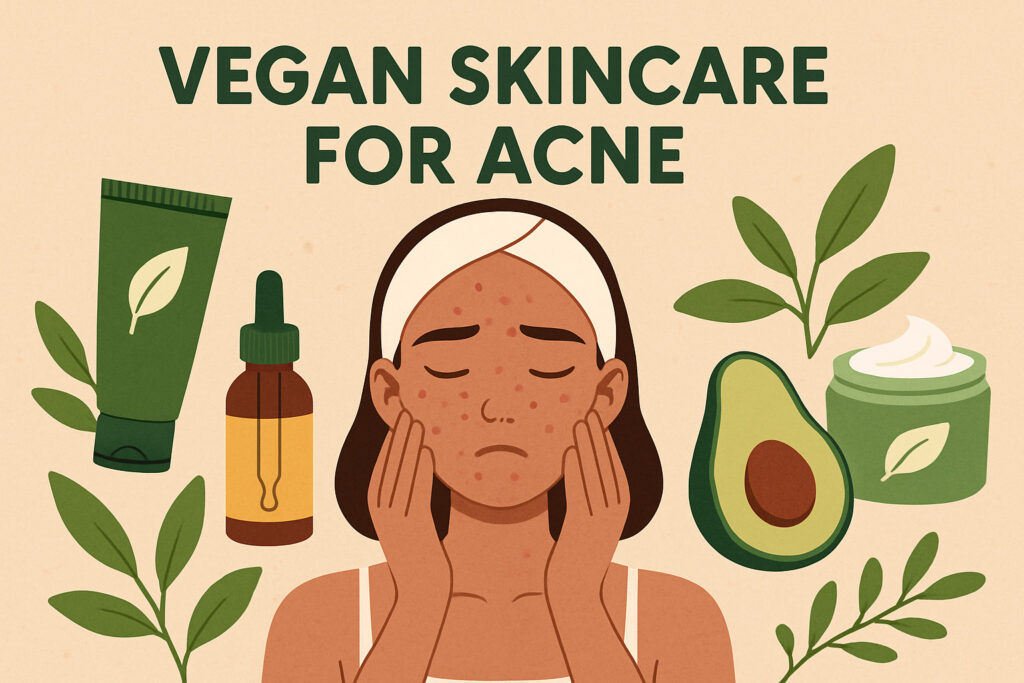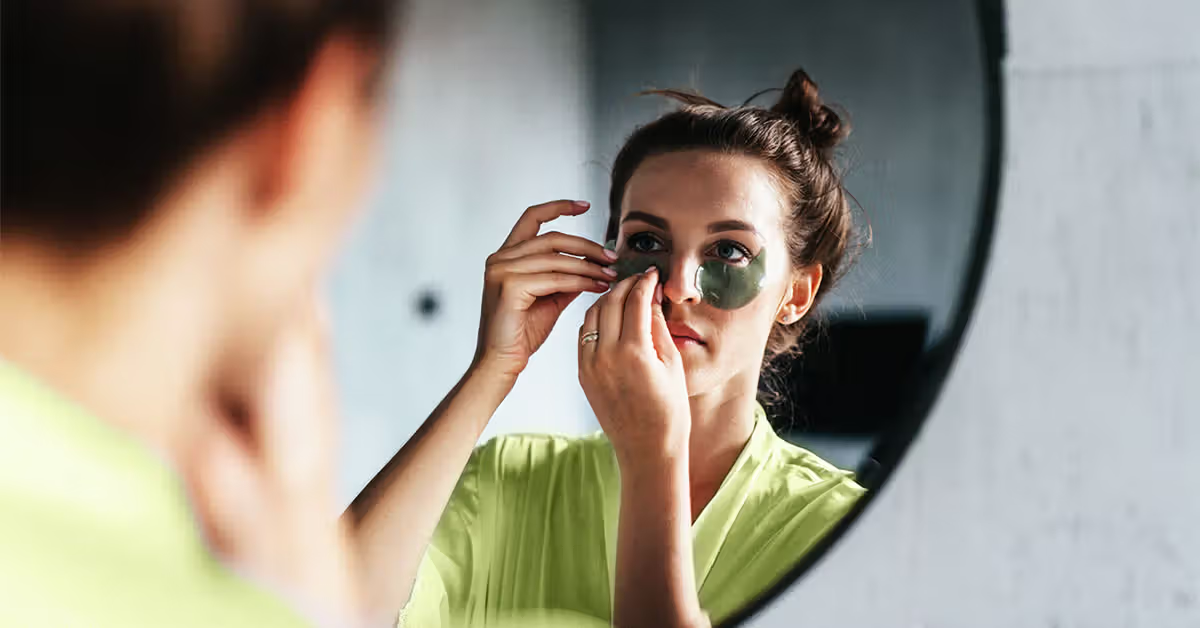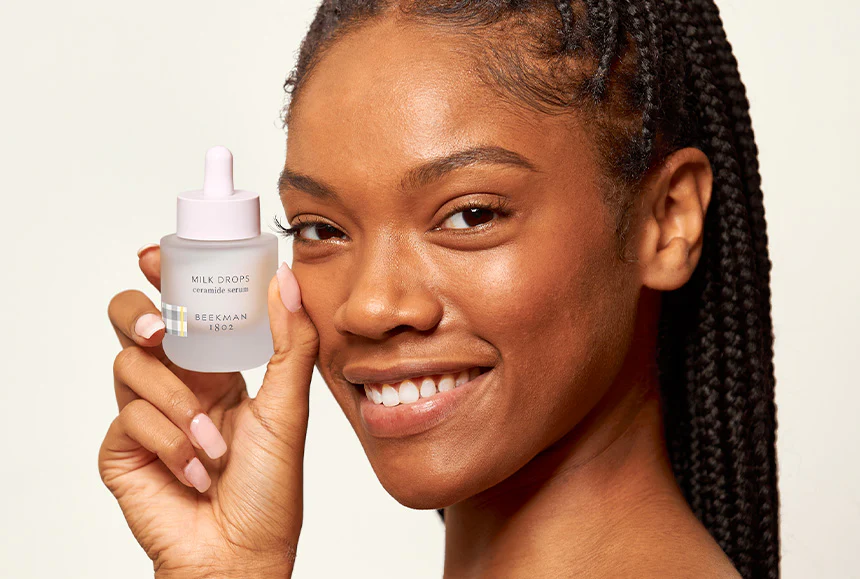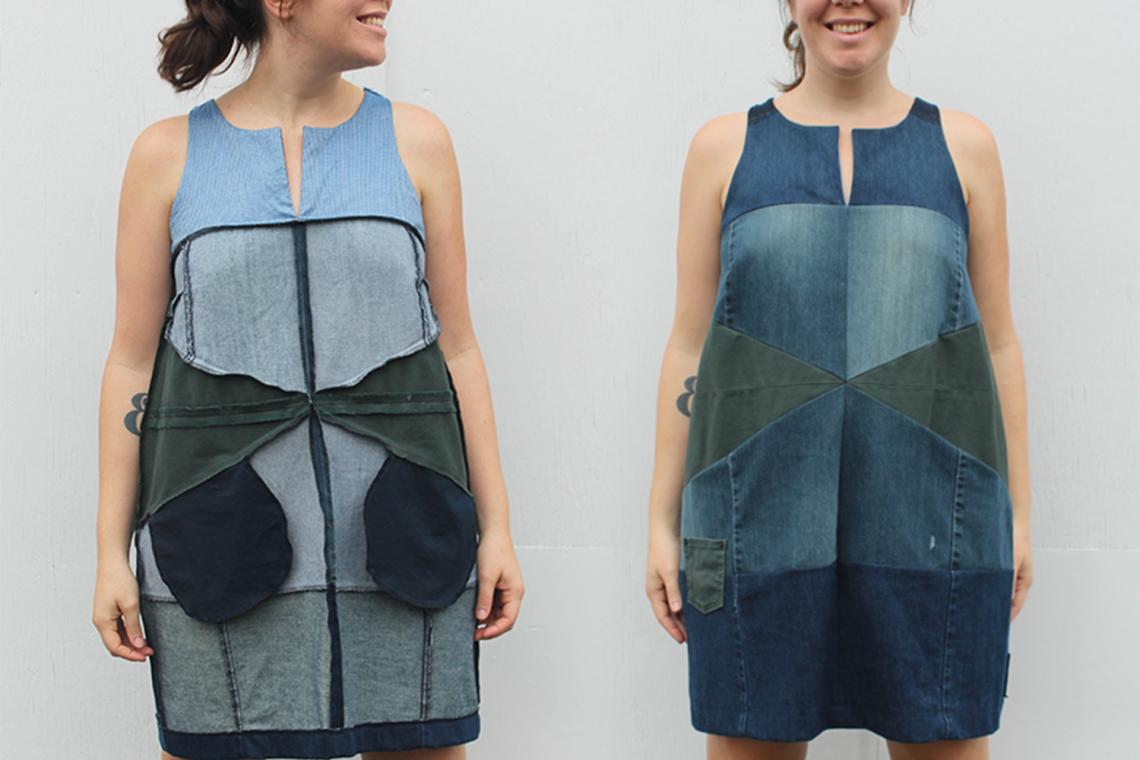The Plant-Based Path to Clear Skin
Vegan skincare for acne combines plant-derived ingredients with cruelty-free practices to effectively treat breakouts without animal products. Here’s what you need to know:
- Key Vegan Acne-Fighting Ingredients: Salicylic acid, tea tree oil, benzoyl peroxide, niacinamide, willow bark, zinc, and sulfur
- Benefits: Less irritation, anti-inflammatory properties, and environmentally friendly
- Best For: All skin types, especially those with ethical concerns or sensitivities to conventional products
Struggling with breakouts while trying to maintain cruelty-free choices? You’re not alone. Many people find that traditional acne treatments contain hidden animal ingredients or haven’t been formulated with both ethics and efficacy in mind.
Studies published in the Journal of the Academy of Nutrition and Dietetics show increasing evidence that diets high in dairy and high-glycemic foods correlate with acne severity. This suggests that a plant-based approach—both in what you put on your skin and what you eat—may help reduce breakouts.
Vegan acne products typically avoid pore-clogging saturated fats found in animal-derived ingredients. Instead, they harness the power of plant-based actives that can:
- Reduce inflammation and redness
- Kill acne-causing bacteria
- Regulate oil production
- Gently exfoliate without harsh chemicals
Many effective acne-fighting ingredients like salicylic acid (derived from willow bark) and tea tree oil are naturally vegan. Even lab-created ingredients like benzoyl peroxide can be vegan-friendly while offering powerful antibacterial properties.
The good news? You don’t have to sacrifice results when choosing vegan skincare for acne. Products from quality brands combine science-backed actives with ethical formulations.
Vegan refers to products without animal ingredients, while cruelty-free means no animal testing. For maximum ethical impact, look for products that are both.

Vegan Skincare for Acne: How It Differs From Conventional Products
Ever grabbed an acne treatment without checking what’s actually inside? You might be surprised. Vegan skincare for acne takes a fundamentally different approach from traditional products in ways that can actually benefit your skin.
The most obvious difference is the complete absence of animal-derived ingredients. Many conventional acne treatments hide animal by-products in their formulas – things like lanolin (from sheep’s wool), beeswax, or collagen (from animal tissues). What’s particularly frustrating is that some of these ingredients can actually be comedogenic – meaning they might be clogging your pores and making your breakouts worse!
“I can’t tell you how many clients come to us confused about why their ‘natural’ acne treatment isn’t working,” says our lead formulator at Beyond Beauty Lab. “When we point out the animal-derived ingredients that might be triggering more breakouts, they’re genuinely shocked.”
Instead of these potentially problematic ingredients, vegan formulations typically use plant-based alternatives that tend to be gentler on sensitive, acne-prone skin. For example, rather than lanolin, you might find hemp seed or safflower oil – plant oils with lower comedogenic ratings that won’t clog pores.
Becoming a label detective is essential when shopping for vegan skincare for acne. Look for trusted certification logos from organizations like PETA or The Vegan Society. The Leaping Bunny logo ensures the product is cruelty-free, though remember this doesn’t automatically mean it’s vegan.

Another significant difference? Vegan brands often skip the pore-clogging fillers found in conventional products. Many prioritize clean, minimal ingredient lists that focus on effective actives rather than cheap fillers that might irritate your already angry skin.
| Vegan Acne Ingredients | Non-Vegan Alternatives | Potential Skin Impact |
|---|---|---|
| Tea Tree Oil | Benzoyl Peroxide with animal-derived stabilizers | Both antibacterial, but tea tree may cause less dryness |
| Plant-derived Salicylic Acid | Salicylic Acid with animal-tested carriers | Same active, but vegan version avoids ethical concerns |
| Niacinamide | Retinol (often tested on animals) | Both regulate oil, but niacinamide is typically gentler |
| Plant Oils (Hemp, Safflower) | Lanolin, Beeswax | Plant oils often have lower comedogenic ratings |
| Kaolin Clay | Tallow-based thickeners | Clay absorbs excess oil without animal fat |
Hidden Animal Ingredients to Avoid
When hunting for vegan skincare for acne, watch out for these sneaky animal-derived ingredients that often fly under the radar:
Tallow might be hiding in your cleanser as “sodium tallowate” – it’s basically rendered beef or mutton fat. Collagen from animal tissues often appears in anti-aging products that also target acne. That pretty red tint in your acne treatment? It might be carmine, made from crushed cochineal insects. Keratin comes from animal hair, horns, or hooves, while shellac is actually a resin secreted by the female lac bug.
Other tricky ingredients include squalene (often from shark liver oil unless specified as plant-derived), glycerin (can be animal-derived unless listed as vegetable glycerin), and lactic acid (potentially from milk unless labeled synthetic or plant-derived).
Beyond the ethical issues, many of these animal ingredients can trigger breakouts in sensitive skin. Animal-derived squalene, for instance, tends to be heavier and potentially more pore-clogging than its lighter, plant-derived olive alternative.
Cruelty-Free vs. Vegan—Why Both Matter
Let’s clear up some confusion: “cruelty-free” and “vegan” aren’t the same thing when it comes to acne treatments.
A cruelty-free product hasn’t been tested on animals at any stage, but might still contain animal-derived ingredients. A vegan product contains no animal ingredients or by-products, but (surprisingly) might still have been tested on animals if the brand doesn’t explicitly claim to be cruelty-free.
For both your skin and your conscience, we recommend products that check both boxes. Here’s why this dual approach matters for treating acne:
From an ethics standpoint, both approaches minimize harm to animals and align with compassionate values. For efficacy, vegan formulations typically eliminate those comedogenic animal fats that can worsen acne, while cruelty-free testing methods often result in products better suited for human skin (which differs significantly from animal skin). And in terms of sustainability, plant-based ingredients generally leave a smaller environmental footprint than animal-derived ones.
As Mia, one of our long-term clients, told us: “I battled cystic acne for years using whatever dermatologists recommended. When I finally switched to products that were both vegan and cruelty-free, my skin cleared up within months. Now I feel good about what I’m putting on my face in every way possible.”
7 Plant-Based Active Ingredients That Zap Zits
When it comes to fighting acne naturally, these plant-based powerhouses deliver serious blemish-busting benefits without any animal ingredients:

Vegan skincare for acne: how salicylic acid unclogs pores
Salicylic acid is truly the gold standard in vegan skincare for acne – and for good reason! This beta-hydroxy acid (BHA) naturally comes from white willow bark, though it can also be synthetically produced while remaining completely vegan.
What makes salicylic acid so special is its oil solubility. Unlike water-soluble AHAs, salicylic acid can actually penetrate oil-clogged pores to exfoliate from within. Research published in the Journal of Clinical and Aesthetic Dermatology shows it works by dissolving the intercellular “glue” holding dead skin cells together, clearing out clogged pores, reducing inflammation, and providing mild antimicrobial effects against acne-causing bacteria.
Most effective over-the-counter products contain 1-2% concentrations, with leave-on formulations generally working better than wash-off products. We’ve noticed many of our clients with sensitive skin actually tolerate vegan salicylic acid formulations better than conventional ones, likely because they’re often paired with soothing plant extracts rather than potentially irritating synthetic additives.
Tea Tree Oil—Nature’s Antibiotic
Tea tree oil might just be Mother Nature’s answer to antibiotics for your skin. Derived from the leaves of the Australian Melaleuca alternifolia tree, this essential oil contains terpinen-4-ol, which gives it powerful bacteria-fighting properties.
“Tea tree oil has been my secret weapon for spot treatment,” shares one of our community members. “I apply a tiny amount directly to blemishes at night, and by morning, the redness and size are dramatically reduced.”
A landmark study in the Medical Journal of Australia found that 5% tea tree oil was as effective as 5% benzoyl peroxide in treating acne—though it worked more slowly but with fewer side effects like dryness and irritation. It kills the P. acnes bacteria responsible for inflamed breakouts, reduces redness, speeds healing, and can even help regulate oil production. For best results, look for products with 2-5% tea tree oil, or dilute pure tea tree oil with a carrier oil for direct application.
Benzoyl Peroxide (Lab-Made Yet Vegan)
Surprised to see benzoyl peroxide on a vegan list? While it’s synthesized in a lab, benzoyl peroxide is completely vegan as it contains no animal-derived ingredients and can be created without animal testing.
Benzoyl peroxide works differently than salicylic acid. It releases oxygen inside pores (which kills the oxygen-hating P. acnes bacteria), gently dissolves blackheads, reduces inflammation, and helps prevent antibiotic resistance. Most products contain between 2.5% and 10%, with research showing that lower concentrations can be equally effective with fewer side effects like dryness and peeling.
Just a friendly warning from personal experience: benzoyl peroxide will bleach your towels and pillowcases! I learned this the hard way, so consider using white linens when incorporating this ingredient into your routine.
Gentle Powerhouses: Willow Bark & Niacinamide
Willow bark is the natural source of salicylic acid, but when used in its whole extract form, it offers additional benefits. Rich in tannins and flavonoids, willow bark provides gentler exfoliation than isolated salicylic acid, plus antioxidant protection and soothing anti-inflammatory properties that calm irritated skin.
Niacinamide (vitamin B3) is another vegan superstar for acne-prone skin. This water-soluble vitamin regulates oil production, strengthens your skin barrier, reduces redness, and fades those stubborn post-acne dark spots. It plays nicely with other acne-fighting ingredients too!
“Niacinamide was the game-changer in my vegan skincare routine,” reports another community member. “It not only prevented new breakouts but also helped fade the dark spots from old ones.”
For best results, look for products with 2-5% niacinamide, though some formulas contain up to 10% for more intensive treatment.
Mineral Helpers: Zinc & Sulfur
Zinc and sulfur are two completely vegan mineral-based ingredients that pack a serious punch against stubborn breakouts.
Zinc (typically as zinc oxide or zinc PCA in skincare) offers antibacterial benefits against acne-causing bacteria, absorbs excess oil, calms inflammation, and supports wound healing. Interestingly, studies have shown that people with acne often have lower zinc levels than those with clear skin, making topical zinc a smart addition to your routine.
Sulfur has been used for centuries to treat various skin conditions and remains an effective vegan option for acne today. It works by drying excess oil, exfoliating dead skin cells, killing bacteria, and reducing inflammation. Sulfur is particularly effective for inflammatory acne and conditions like fungal acne or rosacea that might accompany traditional breakouts.
I won’t sugarcoat it—sulfur does have a distinctive egg-like smell, but many modern formulations cleverly mask this with plant-based fragrances. The results are worth holding your nose for a minute or two during application!
At Beyond Beauty Lab, we believe these plant-powered ingredients prove you don’t need to compromise your vegan values to achieve clear, radiant skin. Nature provides everything we need to combat breakouts effectively and gently.
Build a Complete Vegan Skincare Routine for Acne-Prone Skin
Creating an effective vegan skincare for acne routine doesn’t have to be complicated, but it does require some thoughtful choices and consistency. I’ve helped hundreds of clients transform their skin with plant-powered routines that actually work—let’s build one for you too:

Morning Ritual
Start your day with a gentle awakening for your skin. A low-pH cleanser is your best friend here—look for one with mild plant-derived surfactants from coconut or sugar rather than harsh sulfates that strip your skin barrier.
After cleansing, reach for an alcohol-free toner containing niacinamide (between 2-5%) to balance oil production and calm that morning redness. Many of our clients love formulations that also include soothing licorice root or green tea extract.
“I used to wake up so oily and red,” shares Sarah, one of our community members. “Since switching to a vegan niacinamide toner, my skin stays balanced until evening—it’s been a game-changer.”
If your skin tends to break out regularly, consider adding a lightweight salicylic acid serum (1-2%) to keep pores clear throughout the day. Those with sensitive skin might prefer willow bark extract as a gentler alternative that still delivers results.
Contrary to what you might have heard, acne-prone skin absolutely needs moisture! Choose an oil-free gel moisturizer with humectants like hyaluronic acid and glycerin. This actually helps regulate oil production rather than increasing it.
Finish with what might be the most important step: a zinc oxide-based sunscreen with at least SPF 30. The beauty of zinc is that it not only protects from UV damage but also provides anti-inflammatory benefits for acne-prone skin. Look for lightweight, matte formulations that won’t feel heavy or greasy.
Evening Ritual
Evenings are when the real magic happens for your skin. If you wear makeup, start with a lightweight vegan oil cleanser—jojoba or hemp seed oil bases are ideal as they have low comedogenicity ratings and actually help dissolve excess sebum.
Follow with your regular gentle cleanser, or switch to one infused with tea tree oil or salicylic acid for an extra acne-fighting boost. This double-cleanse ensures all traces of sunscreen, makeup and daily pollution are completely removed.
Now it’s time for your powerhouse step: a leave-on BHA treatment with 2% salicylic acid. This ingredient works overnight to keep pores clear and prevent new breakouts. Apply it to your entire face (avoiding the eye area), not just active breakouts.
For those pesky individual pimples that need extra attention, spot treat with either benzoyl peroxide (2.5-5%), sulfur (3-10%), or properly diluted tea tree oil (5%). For whiteheads that have come to a head, hydrocolloid patches work wonders overnight.
“I keep a little arsenal of spot treatments in my bathroom,” laughs Jamie from our community. “Different types of breakouts respond to different ingredients, so I’ve learned which works best for each situation.”
Finish with a slightly richer (but still oil-free) moisturizer containing ingredients like niacinamide, panthenol, or centella asiatica. These help repair your skin barrier while you sleep, which is crucial for acne-prone skin—a damaged barrier actually leads to more breakouts, not fewer.
Weekly Boosters
Think of these treatments as your skin’s weekly reset button—use them 1-2 times weekly for improved results.
A kaolin or bentonite clay mask works wonders to draw out impurities and absorb excess oil. Look for formulations that also include soothing ingredients like aloe vera to prevent over-drying. These masks help prevent the congestion that leads to breakouts before they even start.
Consider incorporating a vegan probiotic mask or essence to balance your skin microbiome. Exciting new research suggests that promoting “good” bacteria on the skin can help combat acne-causing bacteria. It’s like a garden—you want to cultivate the beneficial plants while discouraging the weeds.
For a truly modern approach, blue light therapy devices (completely vegan) can significantly reduce acne-causing bacteria. Many at-home devices combine blue light (antibacterial) with red light (anti-inflammatory) for impressive results without irritation.
Vegan skincare for acne: ingredient layering rules
The order in which you apply your vegan skincare for acne products can make or break your results. Here’s what you need to know:
PH matters significantly. Apply products from lowest to highest pH for optimal absorption—typically this means acidic treatments (like BHAs) first, followed by hydrating serums, then moisturizers, with oils and sunscreen as your final steps.
Give active ingredients like salicylic acid or benzoyl peroxide time to work their magic. Allow 5-15 minutes of absorption time before applying your next product to prevent dilution and maximize effectiveness.
Be cautious about mixing too many active ingredients in one routine. Benzoyl peroxide and retinol can cancel each other out, while using multiple exfoliants in one session can damage your skin barrier. As a general rule, limit exfoliation to once daily and consider alternating your powerful actives between morning and evening routines.
“I learned the hard way about combining too many actives,” admits Alex, who’s been following our advice for months. “Now I focus on one main active per routine—salicylic acid in the morning and benzoyl peroxide at night—and my skin is much happier and clearer.”
Always patch test new vegan products on a small area for 24-48 hours before applying to your entire face. This is especially important if you have sensitive skin or are prone to allergic reactions. That exciting new plant extract might be nature’s gift—or your skin’s newest irritant.
By following these layering guidelines and being consistent with your routine, you’ll maximize the effectiveness of your vegan acne-fighting ingredients while minimizing potential irritation. Consistency trumps complexity every time—a simple routine you actually follow will always outperform an elaborate one you can’t maintain.
Lifestyle & Diet Tweaks to Boost Results
Your vegan skincare products can work wonders, but what you put on your plate might be just as important as what you put on your face. The connection between what we eat and how our skin behaves isn’t just anecdotal anymore—science is backing it up in a big way.

That glass of milk might be doing more than just quenching your thirst—it could be triggering tomorrow’s breakout. According to research published in the Journal of the Academy of Nutrition and Dietetics, there’s a significant link between dairy consumption and acne flare-ups. It makes sense when you think about it: dairy contains natural hormones and growth factors that can throw our own hormonal balance out of whack, ramping up oil production and inflammation.
Those sugary snacks aren’t doing your skin any favors either. High-glycemic foods—the ones that send your blood sugar soaring—have been shown to worsen acne. When your blood sugar spikes, your body pumps out insulin, which triggers a cascade of reactions that ultimately lead to more sebum (that’s skin oil) and more inflammation (hello, angry red pimples).
“I never connected my morning bowl of sugary cereal with my afternoon chin breakouts until I started tracking my diet,” shares one of our community members. “Switching to oatmeal with berries made a difference within weeks.”
And if you’re hitting the gym and downing whey protein shakes, you might be inadvertently feeding your acne. Whey is a double whammy—it’s dairy-derived and it can spike insulin levels. Many of our clients have seen dramatic skin improvements after switching to plant-based proteins like pea, hemp, or brown rice protein.

The good news? A plant-rich diet isn’t just good for the planet—it’s great for your complexion too. The colorful fruits and veggies on your plate are packed with antioxidants that fight inflammation at the cellular level. Beans and whole grains bring zinc to the party, helping to regulate oil production. Those flaxseeds you sprinkle on your morning smoothie? They’re loaded with omega-3 fatty acids that calm inflammatory responses. And don’t forget fermented foods like kimchi and sauerkraut, which support gut health—an increasingly important factor in the clear skin equation.
Food Swaps That Calm Skin
You don’t have to overhaul your entire diet overnight. Small, strategic swaps can make a big difference to your skin’s clarity and calm.
That morning latte? Try it with oat milk instead of dairy. Oat milk not only froths beautifully (baristas love it for a reason), but it also contains anti-inflammatory compounds that can help soothe irritated skin from the inside out.
If you’re a smoothie enthusiast, consider switching your whey protein for pea or hemp protein. You’ll still get all the amino acids your muscles need, without the acne-triggering hormones that can come with dairy-based options.
When sweet cravings hit, reach for low-glycemic fruits like berries instead of processed treats. You’ll satisfy your sweet tooth while delivering a dose of skin-supporting antioxidants.
“Switching my morning yogurt for coconut yogurt with berries and replacing my whey protein shakes with pea protein completely transformed my skin within a month,” one community member told us. “The cystic breakouts along my jawline that I’d battled for years simply disappeared.”
After a long day, you might be tempted to unwind with a glass of wine, but alcohol can dehydrate your skin and trigger inflammation. Instead, try a refreshing glass of kombucha or water infused with antioxidant-rich fruits and herbs. Your liver (and your skin) will thank you.
Habits That Worsen Breakouts
Even the most perfect vegan skincare for acne routine can be undermined by certain daily habits. Being mindful of these common pitfalls can help you maintain clearer skin.
Do you find yourself touching your face throughout the day? Each time you do, you’re potentially transferring bacteria and irritants from your hands to your skin. It’s a tough habit to break, but awareness is the first step.
In the quest for clear skin, it’s tempting to scrub away at every imperfection, but over-exfoliating can actually damage your skin barrier. When this protective layer is compromised, inflammation increases and—you guessed it—breakouts follow. Limit exfoliation to 2-3 times weekly, and be gentle.
Those makeup brushes sitting on your vanity? They could be harboring colonies of bacteria if you’re not cleaning them regularly. Make it a habit to wash them weekly with a gentle cleanser.
Your pillowcase spends hours in direct contact with your face each night. If you’re not changing it regularly, you’re essentially pressing your face into a petri dish of old skin cells, hair products, and bacteria. Aim to change cases at least weekly, or consider switching to silk pillowcases, which harbor less bacteria and create less friction against your skin.
Finally, never underestimate the impact of stress and poor sleep on your skin. Both trigger the release of cortisol, which can increase sebum production and inflammation. Prioritizing stress management techniques and good sleep hygiene isn’t just good for your mental health—it’s essential for your skin health too.
“I had the perfect vegan skincare routine but still struggled with breakouts until I realized I was only changing my pillowcase monthly,” admits one community member. “Once I started changing it weekly, my skin cleared dramatically.”
The journey to clear skin through vegan skincare for acne extends beyond your bathroom shelf to your kitchen, your bedroom, and your daily habits. By making thoughtful choices in all these areas, you’re giving your skin the comprehensive support it needs to truly thrive.
Frequently Asked Questions about Vegan Acne Care
Does going vegan clear acne automatically?
The relationship between veganism and clear skin isn’t quite as straightforward as we might hope. While many people do notice their complexion improving after switching to a plant-based diet, going vegan isn’t a guaranteed acne cure-all for everyone.
“I expected my skin to clear up immediately after ditching dairy,” shares one of our community members, “but it took about three months and some tweaking of my diet before I really saw dramatic improvements.”
What’s happening behind the scenes is quite individual. Some people experience a near-miraculous change within weeks of eliminating dairy and high-glycemic foods. For others, the journey involves identifying specific triggers that might still exist in their vegan diet—like excessive soy consumption, certain nuts that don’t agree with their system, or processed vegan foods loaded with inflammatory oils and sugars.
The foundation for healthy skin often begins with a balanced vegan diet rich in whole foods, colorful antioxidants, and skin-supporting omega-3s. However, even the cleanest diet usually needs to be complemented with effective topical vegan skincare for acne products that directly target existing breakouts and prevent new ones from forming.
As one success story from our community beautifully puts it: “My skin improved about 70% just from dietary changes, but finding the right vegan skincare routine was what finally got me to 100% clear. It wasn’t either/or—it was both working together.”
Are vegan actives safe for sensitive skin?
If you’re dealing with both acne and sensitivity (an unfortunately common combination), you’ll be relieved to know that many vegan ingredients are actually ideal for reactive skin—though as with anything skin-related, your mileage may vary.
The plant world offers numerous gentle yet effective options. Ingredients like aloe vera, chamomile, green tea extract, and centella asiatica are renowned for their soothing properties and often find their way into vegan skincare for acne precisely because they calm inflammation while fighting breakouts.
That said, “natural” doesn’t automatically mean “gentle.” Even plant-based powerhouses can cause reactions in some people. Tea tree oil, while brilliant for killing acne bacteria, can irritate very sensitive skin if used at high concentrations. Similarly, if you have a ragweed allergy, chamomile (a relative) might trigger a reaction rather than soothe your skin.
For those with sensitive, acne-prone skin, we recommend these practical steps:
– Start with lower concentrations of active ingredients (try 0.5-1% salicylic acid before jumping to 2%)
– Always patch test new products on your inner arm for 24 hours before applying to your face
– Prioritize fragrance-free formulations, as fragrance (even natural) is a common irritant
– Introduce new products one at a time, waiting at least a week between additions
– Consider gentler alternatives like willow bark extract instead of pure salicylic acid
“Living with both rosacea and acne made finding effective skincare seem impossible,” one community member told us. “But vegan formulations with niacinamide and azelaic acid finally gave me the acne control I needed without the burning and redness I got from conventional products.”
How long until I see results with a plant-based routine?
When transitioning to a vegan acne routine, patience truly is a virtue—but the results are worth the wait. Here’s what the journey typically looks like:
During the first 1-2 weeks, you might actually experience what seems like a setback. This “purging” phase happens because ingredients like salicylic acid accelerate cell turnover, bringing hidden congestion to the surface. Don’t panic! This is actually progress in disguise.
By 4-6 weeks, most people notice the inflammation calming down and fewer new breakouts appearing. This timing aligns perfectly with your skin’s natural renewal cycle, which takes about a month to complete.
The 8-12 week mark is when the magic really happens. This is typically when you’ll see significant clearing of existing acne and visible improvement in those pesky post-acne marks. Most of our community members report feeling genuinely happy with their skin by this point.
For full change, including faded hyperpigmentation and a truly balanced skin microbiome, give yourself 3-6 months of consistent care. The skin you’ve always wanted takes time to reveal itself.
Consistency during this process is absolutely crucial. As one of our most inspiring success stories illustrates: “I almost threw in the towel after three weeks when my skin seemed to be getting worse, but something told me to stick with it. By week six, my complexion was clearer than it had been in years, and now at six months, people constantly ask what foundation I use—but I’m not wearing any! My vegan skincare for acne routine has completely transformed not just my skin, but my confidence too.”
Conclusion
Embracing vegan skincare for acne isn’t just about making a compassionate choice—it’s about finding an effective path to clearer skin. Through the power of plant-based ingredients like salicylic acid, tea tree oil, niacinamide, and zinc, you can tackle breakouts at their source while supporting your skin’s natural ability to heal.
The journey to clearer skin rarely follows a straight line. I’ve seen how combining thoughtfully formulated vegan products with mindful eating habits and lifestyle adjustments creates a powerful foundation for lasting results. It’s this holistic approach that often makes the difference between temporary improvements and true skin change.
As you continue your plant-powered skincare journey, keep these essential insights close:
Look for products featuring those proven plant-based actives we’ve discussed throughout this guide. Your skin deserves ingredients that work! Be vigilant about hidden animal ingredients that might be lurking in your products—they often clog pores while compromising your ethical stance. Consistency truly is key; follow your routine diligently, adjusting as needed for your unique skin concerns.
Don’t forget those internal factors we talked about—what you eat and how you manage stress play starring roles in your skin’s story. And perhaps most importantly, practice patience. Your skin needs time to respond to your new routine, but the results will be worth the wait.
Here at Beyond Beauty Lab, we believe beauty shines brightest when aligned with our deeper values. Whether you’re motivated by ethical concerns, environmental impact, or simply finding gentler solutions for sensitive skin, vegan skincare for acne offers a path to clarity that feels right inside and out.
Your skin deserves ingredients that heal without causing harm—to you, to animals, or to our shared planet. The wonderful truth is that the plant kingdom offers everything needed to achieve the clear, balanced complexion you’ve been hoping for.
For more information on building a comprehensive approach to skin health through plant-based living, explore our resources on clean beauty and wellness at Beyond Beauty Lab.







